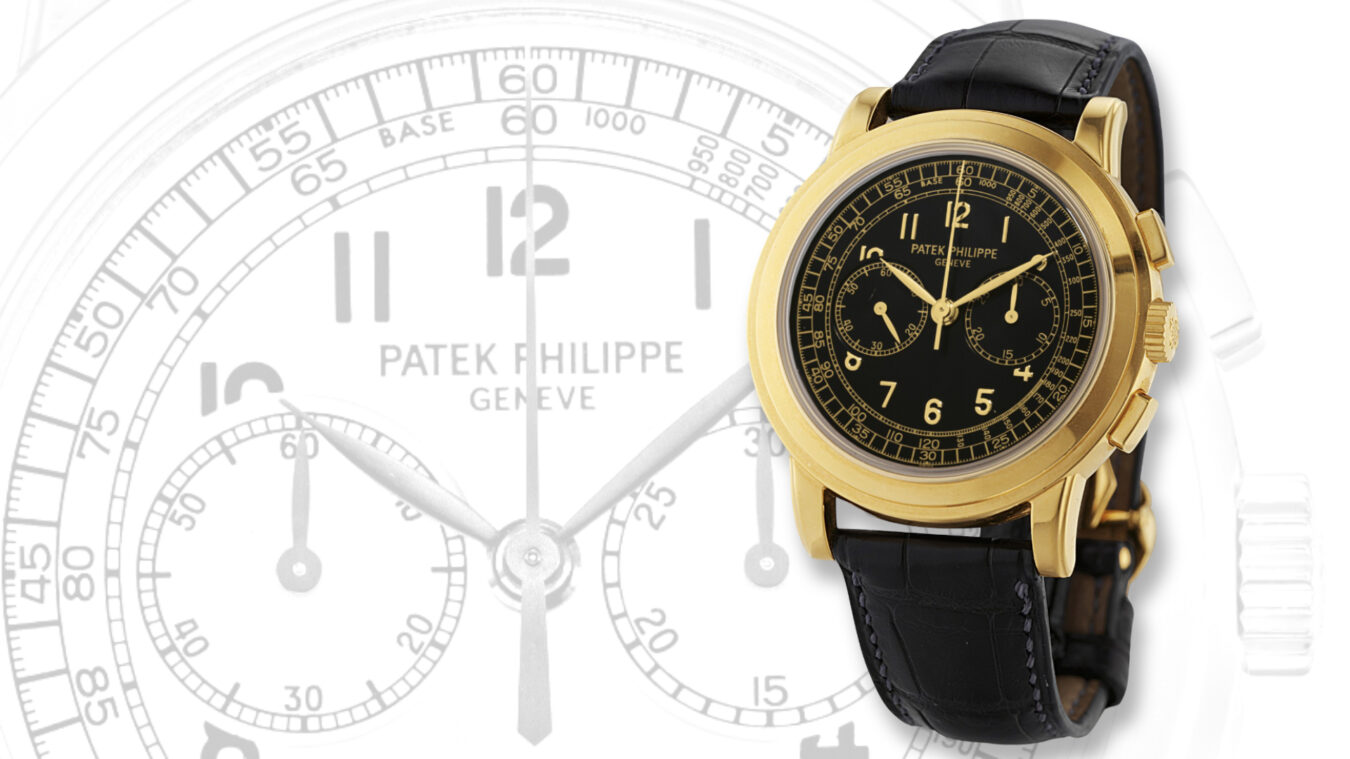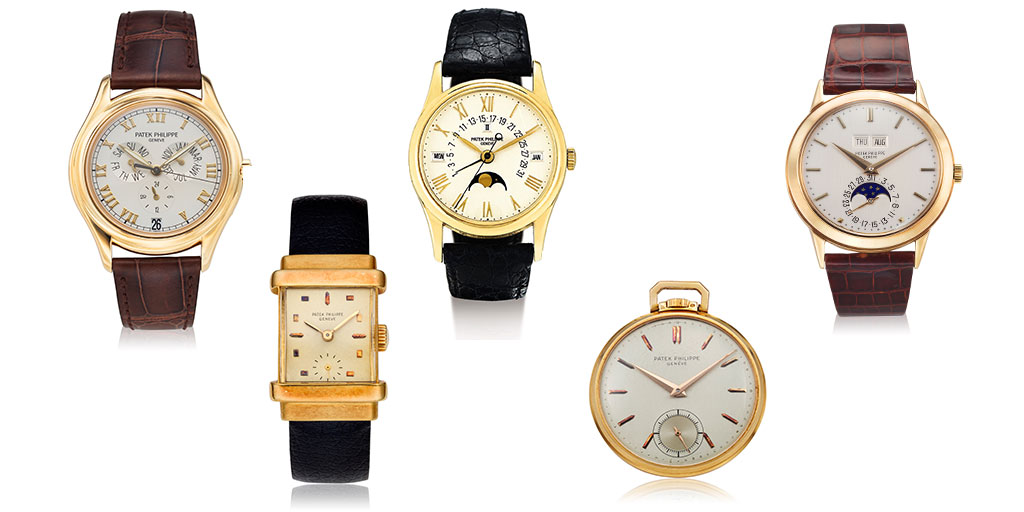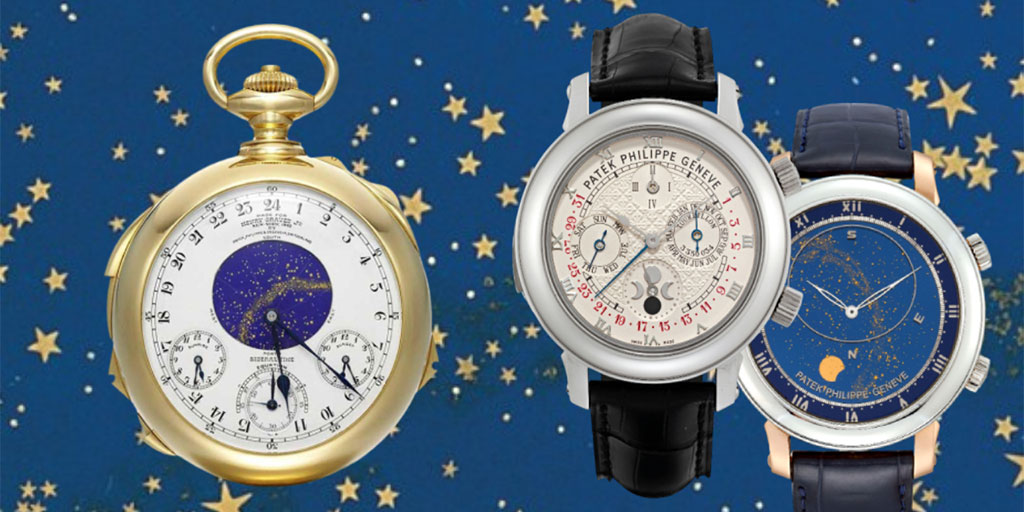Imagine you’re a watch collector in 2000, on the hunt for the ultimate vintage Patek Philippe: a ref. 2499 perpetual calendar chronograph, made from 1951 until 1985. After an exhaustive search, you end up with a ref. 2499 from the 1960s. At about 40 years old, there’s no denying it’s a real, vintage Patek Philippe.
Just as a collector in 2000 might have sought a ref. 2499 as the pinnacle of vintage Patek Philippe, today’s collector might view the ref. 3970 Perpetual Calendar Chronograph similarly. Introduced in 1986 after its predecessor was discontinued, the ref. 3970 will celebrate its 40th anniversary in 2026.
Recently, collectors have begun treating the ref. 3970 more like a vintage Patek Philippe than a modern one. This is reflected in prices, the development of scholarship, and the evaluation of condition.
The first time I tried on a ref. 3970, I was hooked. At 36mm, it felt like the wearable and (borderline) accessible perpetual calendar chronograph, goldilocks between the unobtainable ref. 1518 or ref. 2499 and the aggressively modern ref. 5970. Despite its traditional size, the ref. 3970 communicates a ton of info in a clean and perfectly balanced way. And, if you were so bold, you could still wear it swimming!
Like any true lady or gentleman approaching 40, the ref. 3970 deserves a moment of reflection. As prices continue to creep up—sometimes skyrocket—it’s also an opportunity to rethink how we look at the ref. 3970 as it moves firmly into “vintage” territory, or is at least examined in a way previously reserved for the mid-century classics that preceded it.
This is our Collector’s Guide to the ref. 3970: Its history, a close look at all four series, and the state of the market, with plenty of real collector’s tips along the way.
Patek Philippe Ref. 3970: A Brief Introduction
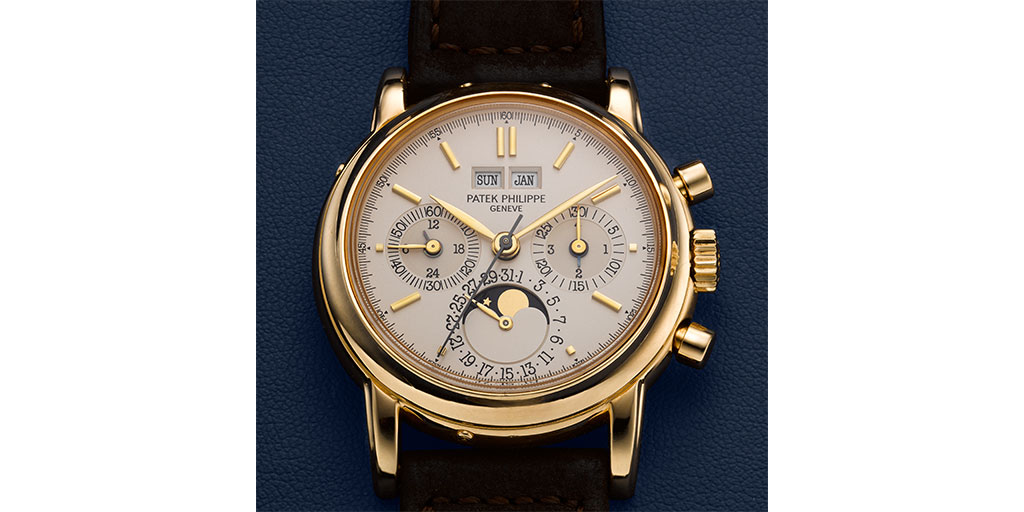
Patek Philippe’s perpetual calendar chronographs, starting with the ref. 1518 in 1941, represent its most important lineage. The ref. 1518 was the first serially produced perpetual calendar chronograph, a feat other brands wouldn’t match for decades. Patek Philippe made only 281 ref. 1518s before introducing the ref. 2499 in 1951, with just 349 produced over 35 years. Both references are considered the pinnacle of vintage watch collecting, with million-dollar auction results as common as forgotten passwords, leaving them unobtainable for many.
Enter the ref. 3970. Patek Philippe introduced the ref. 3970 in 1986 and it remained in production until 2004. Unlike its predecessors, the company produced about 4,000 pieces over a two-decade run, bridging the gap from vintage to modern.
This makes the ref. 3970 more accessible, though this has begun to change in the past few years—especially for early series ref. 3970s, as we’ll explore further.
“The ref. 3970 has become the obtainable-unobtainable reference,” says John Reardon, Collectability’s founder. It’s something anyone would aspire to own and takes some patience to find, but it can still be done.”
Patek Philippe introduced the ref. 3970 one year after the ref. 3940 Perpetual Calendar. Together, these sister references represented a return to traditional, complicated watchmaking after the quartz revolution of the 1970s. Especially in the wake of the brand’s 150th anniversary in 1989, these references became the core of Patek Philippe’s rebirth as a revered manufacturer of Swiss watches.
Spec Sheet (Or, How Do I Even Tell Time on a Ref. 3970?)
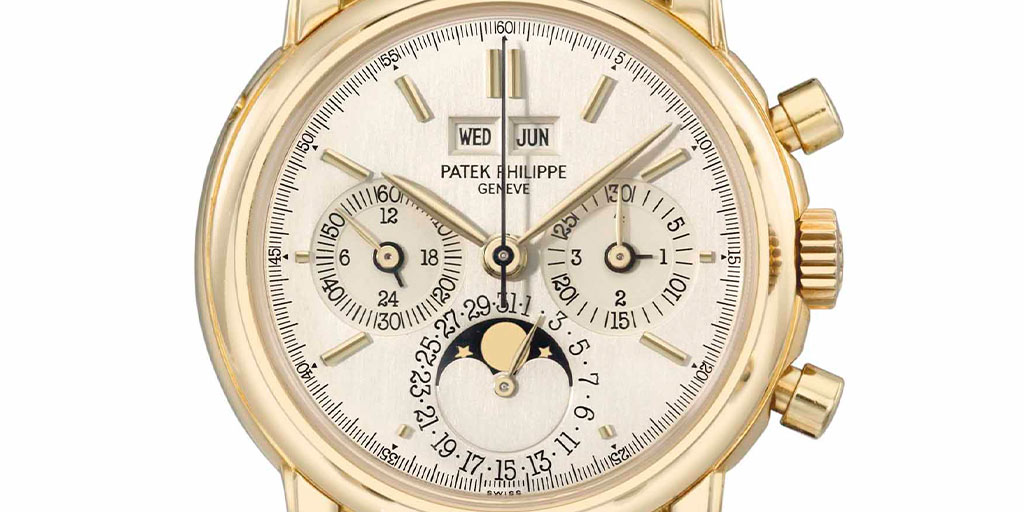
Before we nerd out on the specifics, let’s talk in general terms. The ref. 3970 is the heir to Patek Philippe’s perpetual calendar chronograph lineage and features a familiar three-register layout:
- 3 o’clock: Leap year indicator and 30-minute chronograph register
- 6 o’clock: Moon phase and date
- 9 o’clock: Running seconds and 24-hour indicator
Above the Patek Philippe logo, apertures display the day and month, seen in Italian, English, German, and French. While French are the hardest to find, English tends to be most in demand because, naturally, the world revolves around those darn Americans.
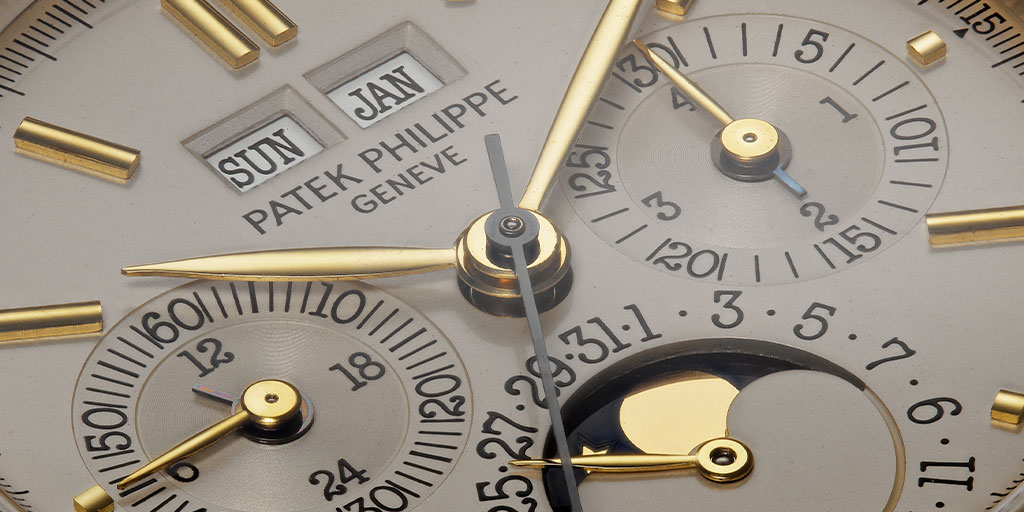
Your first collector’s tip: Always double-check the language of the calendar disks. A savvy dealer might set the day or date to look like it’s English when it’s not. For example: MAR for Marzo (Italian) or March. Sneaky!
Throughout the ref. 3970’s production run, it saw a clear evolution, now delineated into four series by collectors. Subtle changes in font, dial, and aesthetics show Patek Philippe progressing into the modern era, just as the entire Swiss watch industry was through the so-called “neo-vintage” era at the end of the 20th century. We’ll explore these dial, font, and other distinctions in detail when examining each of these four series.
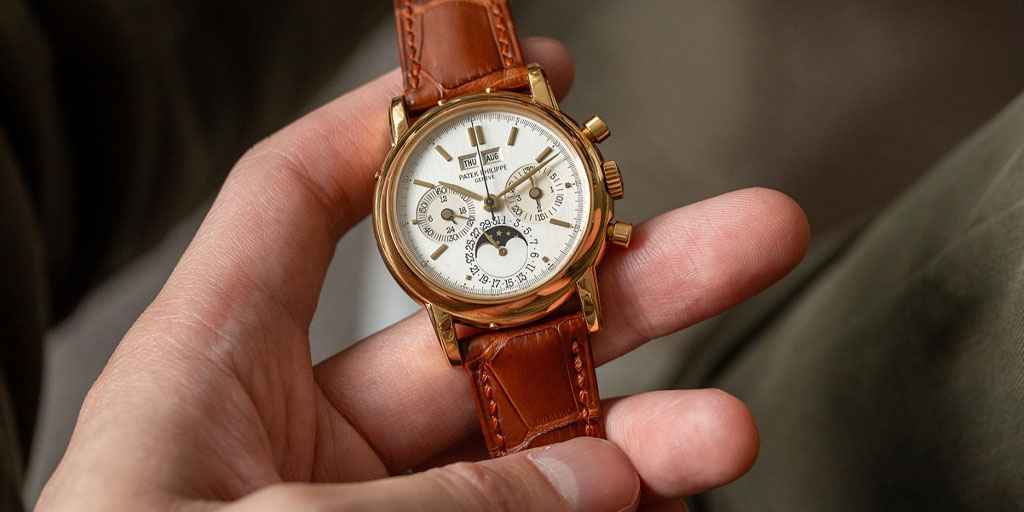
The ref. 3970’s case measures 36mm—1.5mm smaller than the ref. 2499—and 13mm thick, produced in 18K yellow, rose, and white gold, and platinum. The case was provided by Atelier Réunis (key number 28), the casemaker Patek Philippe acquired in the 1970s (eventually, it would turn Atelier Réunis’ Geneva workshop into the Patek Philippe Museum when all workshops united at the current Plan-les-Ouates location).
To me, the ref. 3970’s dimensions are just about perfect. The case is compact, but its elongated, curved, and stepped lugs provide presence. The later ref. 5970 is 4mm larger, and collectors may rave about the ref. 2499’s larger case; but there’s something about the unassuming elegance of a 36mm perpetual calendar chronograph from the most important Swiss watchmaker, especially during this era, that makes it my favorite.
The Movement: Caliber 27-70Q
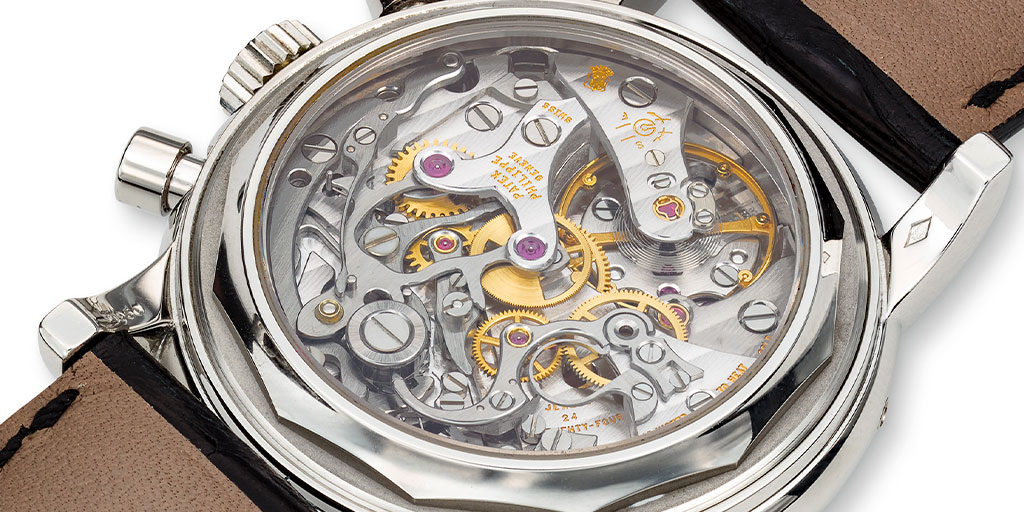
Inside the ref. 3970 is the Patek caliber 27-70Q, based on the Lemania 2310/2320. The vaunted manual-wind column-wheel chronograph was designed by Albert-Gustave Piguet in 1942, famously providing the base for the Omega Speedmaster’s caliber 321 allowing it to become flight-certified by NASA.
At just 27mm in diameter, the Lemania enabled the ref. 3970’s svelte dimensions. While the caliber was historically important and technically proficient, Patek Philippe still heavily modified it, with all adjustment, assembly, and finishing completed in-house. It became the first chronograph to carry the Geneva Seal.
The caliber 27-70Q is Patek Philippe doing what it did best: taking the very best of the Swiss industry, then modifying and finishing it to its own exacting standards.
Before We Get Started, Remember What It Was Like in the 1990s
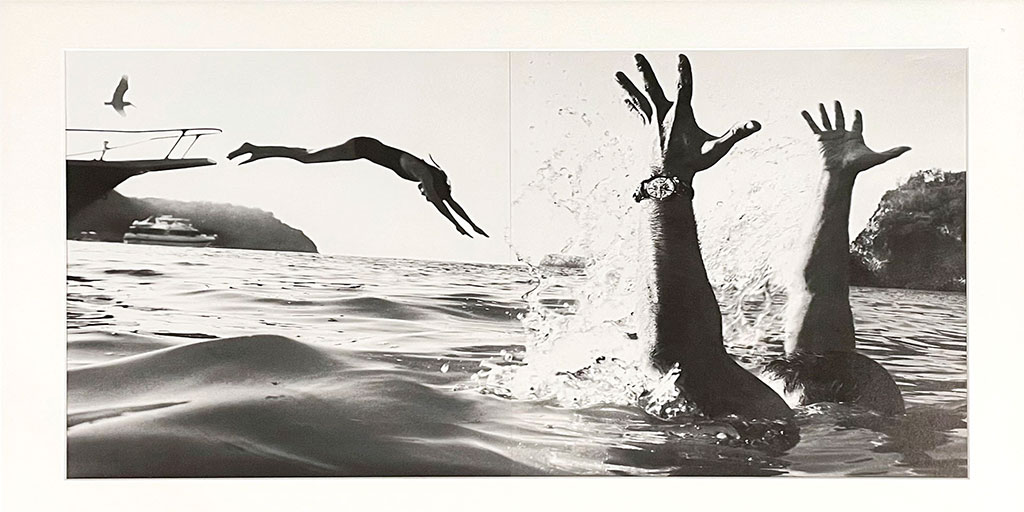
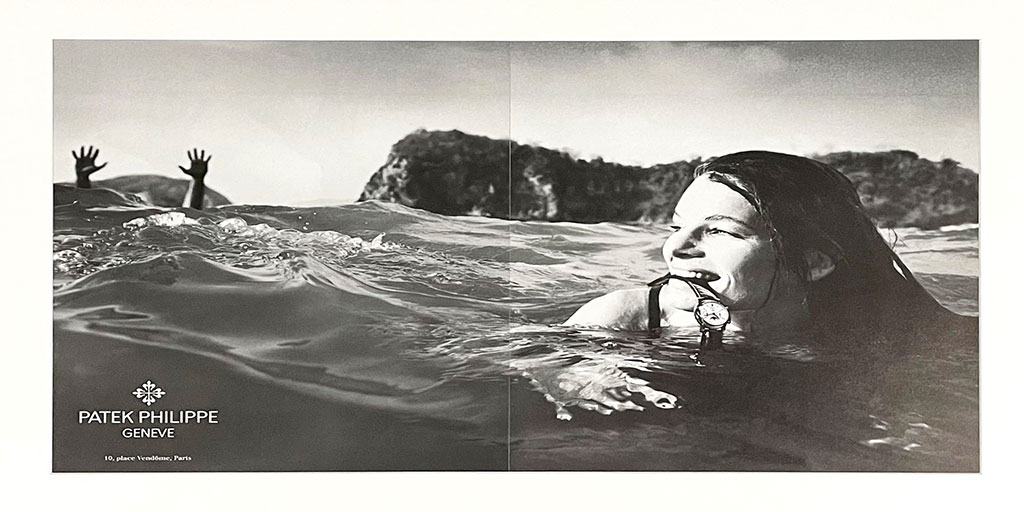
“I specifically remember the ref. 3970, along with the ref. 5004 (split-seconds perpetual calendar) as not being easy to sell,” Reardon said, thinking back to his time at the Henri Stern Watch Agency in the early 2000s. He pointed out that the ref. 3970 would’ve been one of the most expensive regular-production watches in the 1990s and early 2000s. By 2000, the retail price of a gold ref. 3970 was about $77,000 and a platinum ref. 3970P was about $90,000.
These were watches readily available to send to retailers for clients, long before the era of applications and allocations.
Collector’s tip: It’s important to remember this context, and that Patek Philippe would accommodate retailer or client requests, to make a sale. For example, this might’ve meant putting a ref. 5004 dial (with Arabic numerals) on a ref. 3970. They could leave the retailer this way. Similarly, some ref. 3970 examples might’ve sat in retailers for years before being sold. As these dials were exposed to the elements, they’d experience wear, and Patek Philippe might swap out old dials with the latest dial to make the watches look new.
While this can occasionally lead to suspicious-looking examples on the market, it’s important to remember the historical context of luxury watches during the ref. 3970’s production before outright dismissing any given watch.
Analyzing Condition
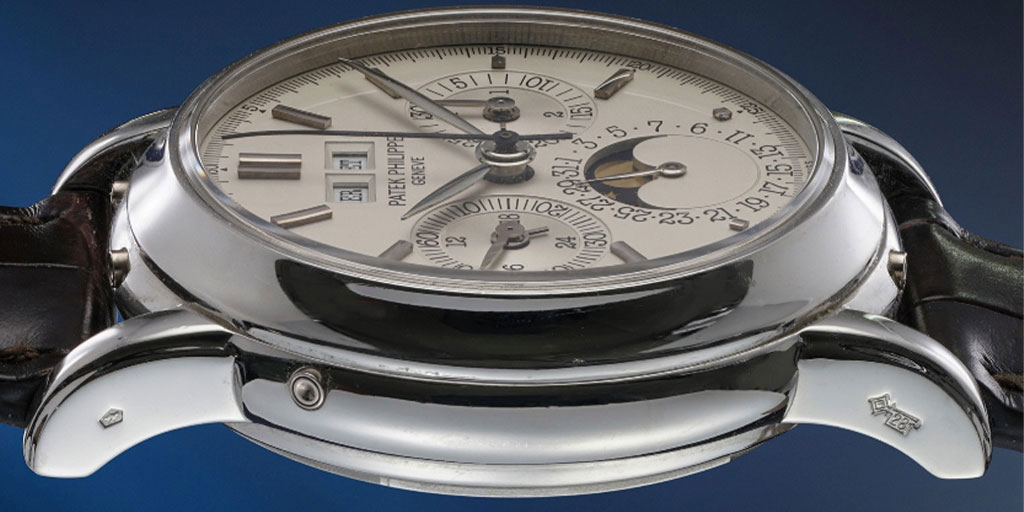
Before diving into each of the 3970’s four series here’s a checklist for assessing condition—whether with a dealer, specialist, or on your own.
These are key factors to assess on vintage watches, reflecting how the ref. 3970 is increasingly viewed as vintage as its age and value rise. As with other vintage watches, collectors place a premium on originality and condition, so this frames our discussion.
Ref. 3970: The Dial
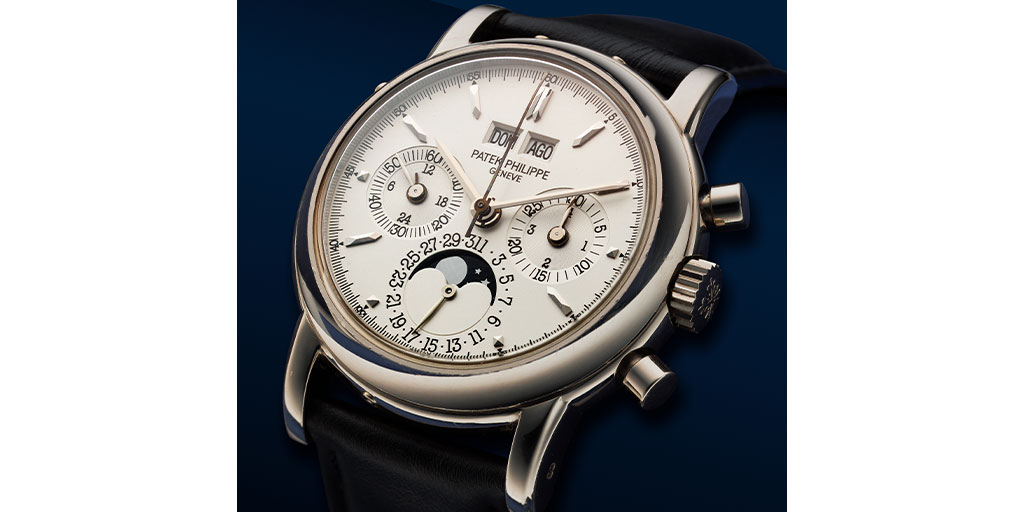
As with most watches, the dial is the first thing to examine on a ref. 3970:
- Look generally for any imperfections. Then, examine the markers closely for any signs of lifting or movement, which would be a dead giveaway that a dial has been cleaned or refinished.
- Next, look at the aperture cuts for the calendar windows: Do they have sharp angles and corners, or have they been smoothed over? The latter is a sign of sanding or cleaning.
- Then, check the fonts on the calendar disks to see if they are period-correct. In general, early date disks have a small serif; a typewriter font is seen in the second series, then there’s a transition to a sans serif font that evolves through the later series.
- Check the hands, as they’ve often been replaced or have marks from handling during a service.
We’ll get to the specifics of these components for each series below.
Ref. 3970: The Case
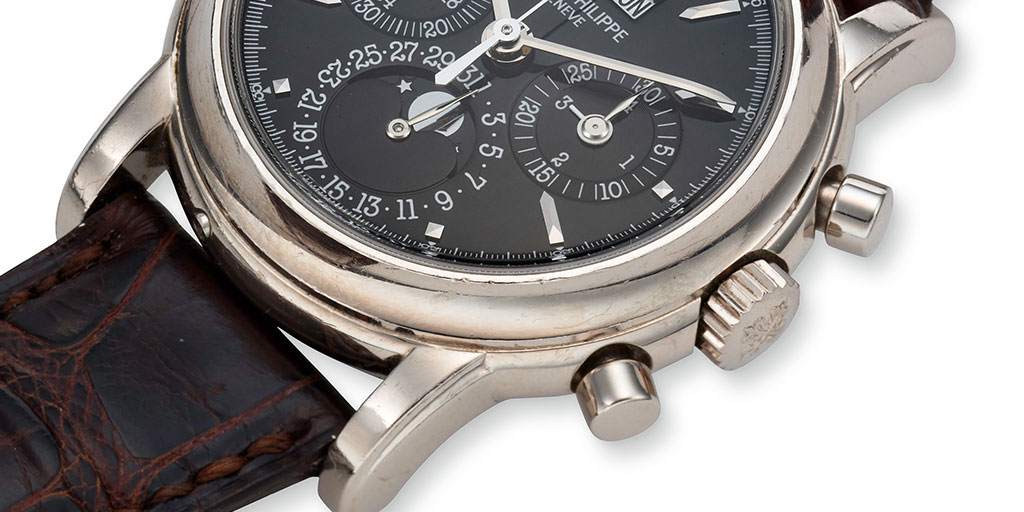
Next, move to the case:
- If possible, feel the lugs in your hand; eyeball their symmetry. The stepped lugs aren’t too sympathetic to a polishing wheel and start to look soft, losing their defined angles after a couple of polishes. When the stepped lugs begin to disappear, a ref. 3970 can fall into “over polished” territory.
- Examine the hallmarks on the case back or lugs to further assess wear and polish. Most ref. 3970 cases have been polished. We’ll discuss variations in hallmarks more below.
- Check the push buttons for the chronograph and calendars. It’s rare to see pushers or the crown replaced, but it can happen.
- If it’s a later series that came with a second case back, triple-check the case back to make sure it matches. So many case backs have been lost from sets, added back, then lost again.
We’ll look at the ref. 3970’s full set—box, papers, and buckles—below.
The Four Series of the Ref. 3970
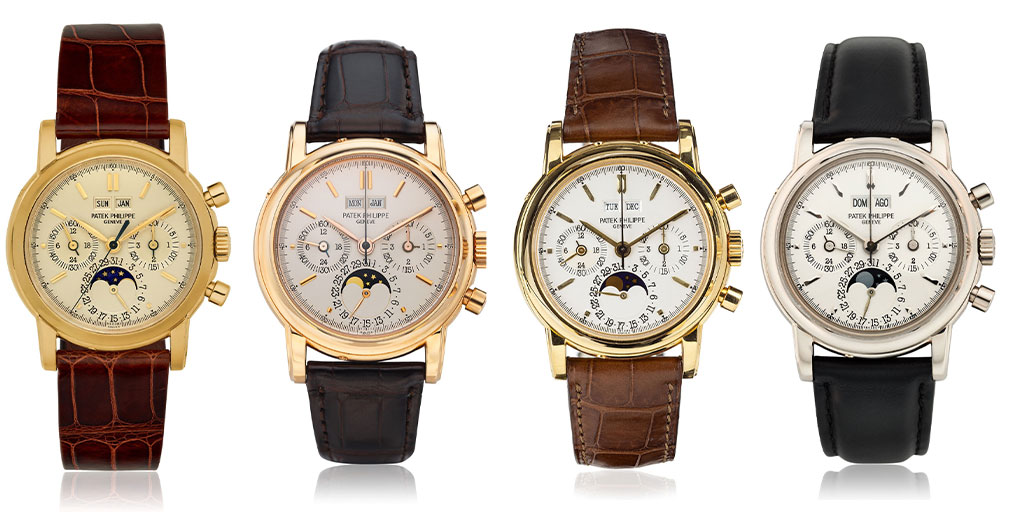
Collectors divide the ref. 3970 into four series across its 18-year production run. These were defined after the fact, recognizing the changes in aesthetics and Patek Philippe’s production methods. This helps to define rarity and collectability, growing the market for the ref. 3970. Laid out in a timeline, these four series also illustrate the 3970’s evolution from the vintage era and successor to the ref. 2499, to the modern era and predecessor of the thoroughly modern ref. 5970.
As the case numbers illustrate below, it’s thought Patek Philippe and its suppliers produced components in batches. For example, the font of day and month disks shows a clear evolution from the first series through the fourth series, but it is difficult to pinpoint exact changes. That said, clear patterns can be laid out chronologically allowing us to define each series.
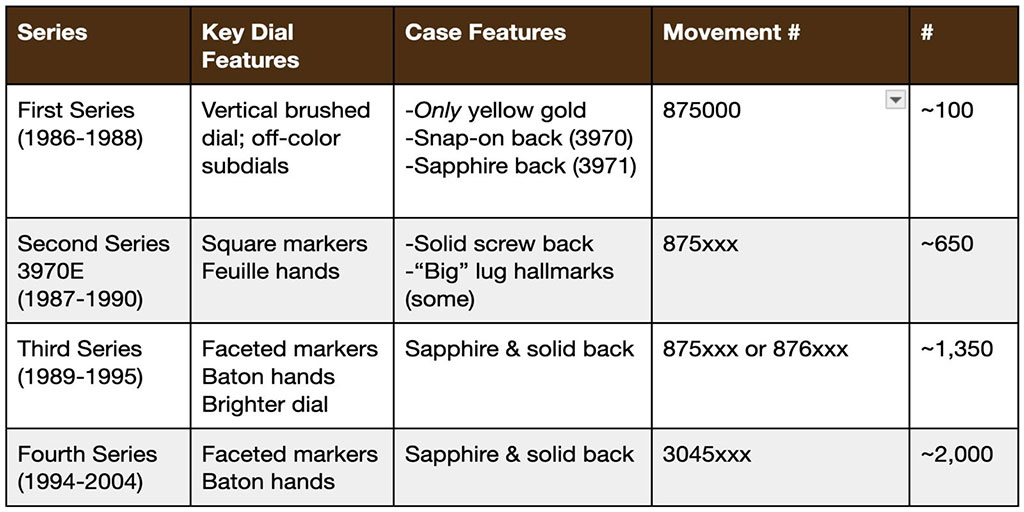
Collector’s tip: While the ref. 3970 can be categorized into four series, it’s important to understand this is an evolution. There aren’t defined breaking points where components switch from one to another. Components were likely produced in batches and watchmakers would’ve used whatever components were on hand during assembly.
First Series (1986-1988)
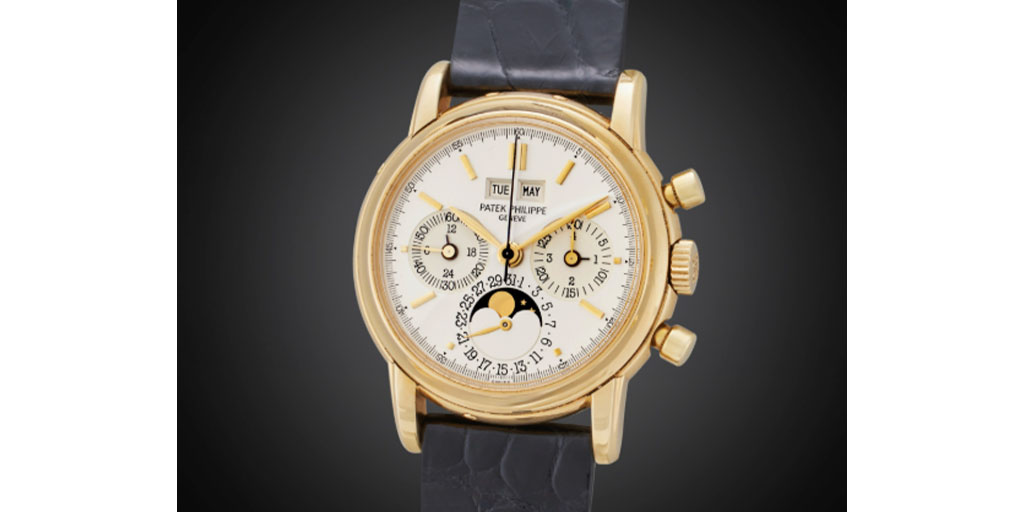
The first series of the ref. 3970 is limited to 100 pieces produced only in 18K yellow gold. It’s by far the rarest and most sought-after of the four series. While it employs many modern techniques compared to the ref. 2499—e.g., pad-printed dials and not hard enamel—the first series’ distinguishing factors give it a vintage touch.
Case: The first defining characteristic of a first-series ref. 3970 is its snap-on solid case back. Later ref. 3970s use a screw-down case back for better water-resistance. This lack of any water-resistance also means that the first series dial is more prone to water damage and replacement, making an all-original example even harder to find.
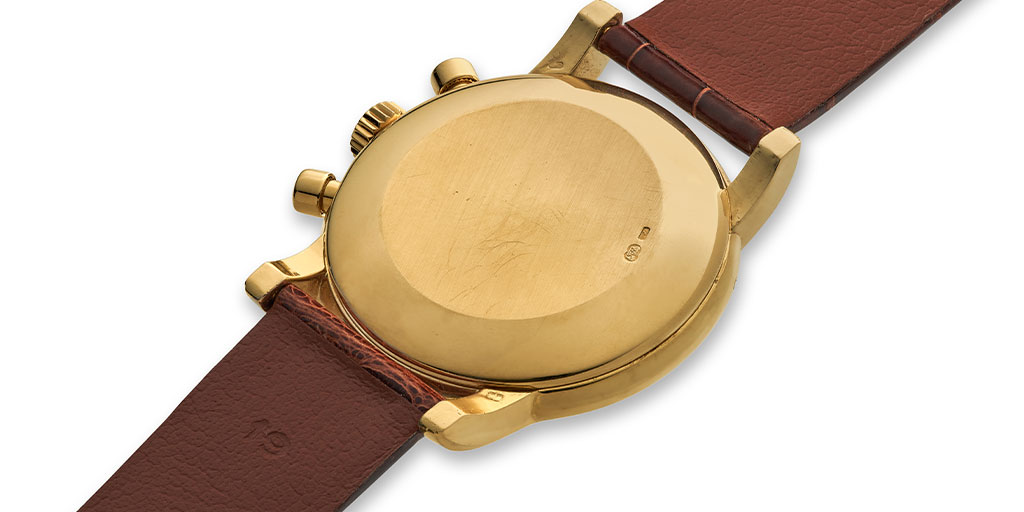
Dial: Besides the case, the first series typically features a dial with a distinct two-tone appearance where the sub dials are noticeably darker than the dial. These sunken markers even carry a different dial code than later ref. 3970 dials in internal Patek Philippe parlance. The first series features feuille hands.
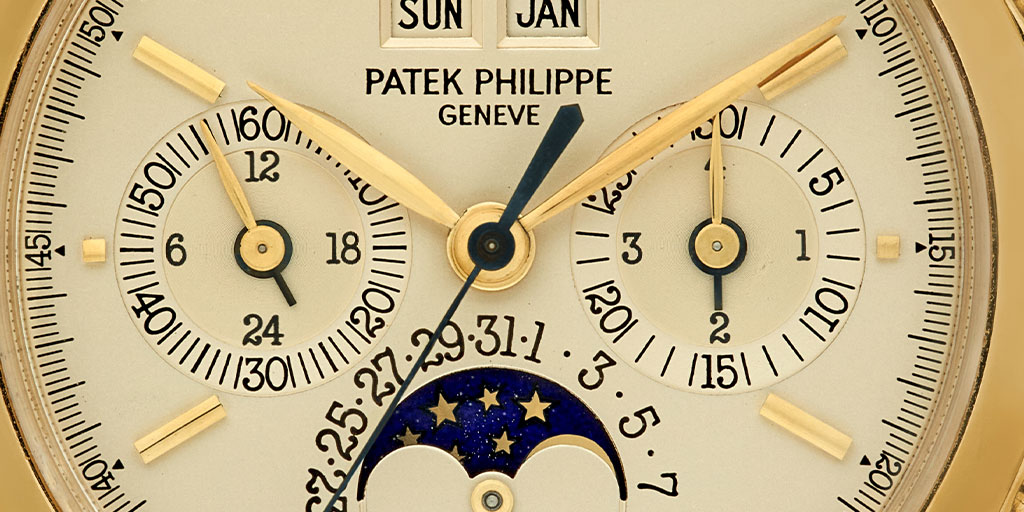
In Dr. Helmut Crott’s The Dial, the process for producing these dials is described as “vertically satin-brushed with sand-blasted counters,” differentiating it from later ref. 3970 dials.
Calendar disks: The font on the calendar disks displaying the month and day at 12 o’clock has a slight serif.
In the past couple of years, everyone seems to have realized that a first-series ref. 3970 is significantly rarer than even a second series, and should be priced accordingly. Prices went crazy, as we’ll discuss more in the Market section. We’ve reached a point where a first series can sell for more than a ref. 2499, which might’ve seemed hard to believe just a few years ago.
This pattern is observable across vintage watches: Once a certain reference is identified as collectible, information and scholarship grow, and collectors place a premium in particular on the earliest examples. Often these early pieces aren’t perfect, but collectors appreciate the raw, rough DNA of these formative years that lay the foundation for whatever comes after.
As of February 2025, about 16 first-series examples have appeared on the market.
Ref. 3971: Sapphire Case back
Another reference was actually introduced alongside the ref. 3970 in 1986: ref. 3971. It’s the exact same as the ref. 3970 except it has a sapphire snap-on case back. As we’ll see, the second series introduced a screw-down, water-resistant case back to the ref. 3970. Clients could also have an option for an additional sapphire case back, though this seems to have been rare. Production of the ref. 3971 continued into the second series; by the third series, every ref. 3970 came with a solid case back and an extra sapphire back, allowing Patek Philippe to consolidate references and discontinue the ref. 3971.
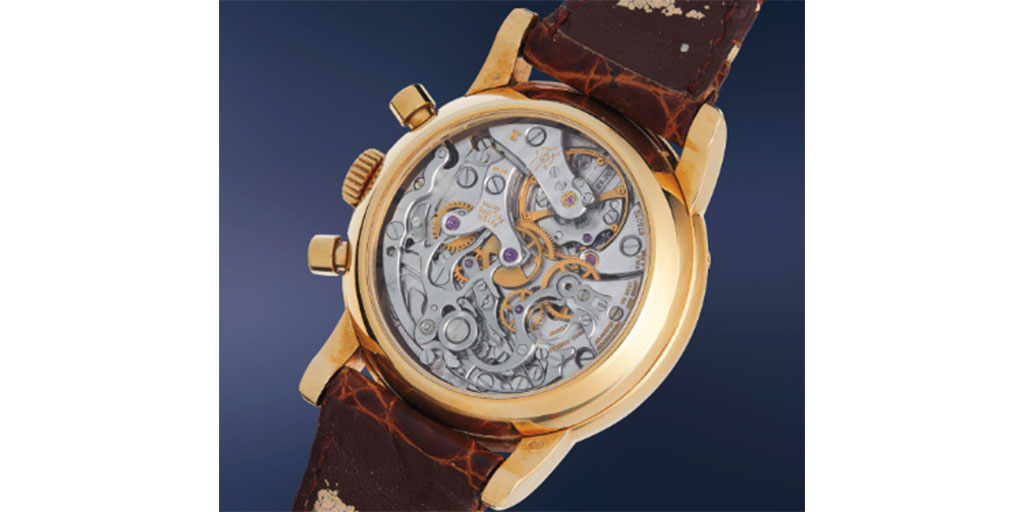
Like the first series ref. 3970, production of the first series ref. 3971 was very limited. Compared to later series, these snap-on case backs give the first series ref. 3970 and ref. 3971 a slightly slimmer, vintage feel on the wrist.
PSecond Series: Transition to the Ref. 3970E (1987-1990)
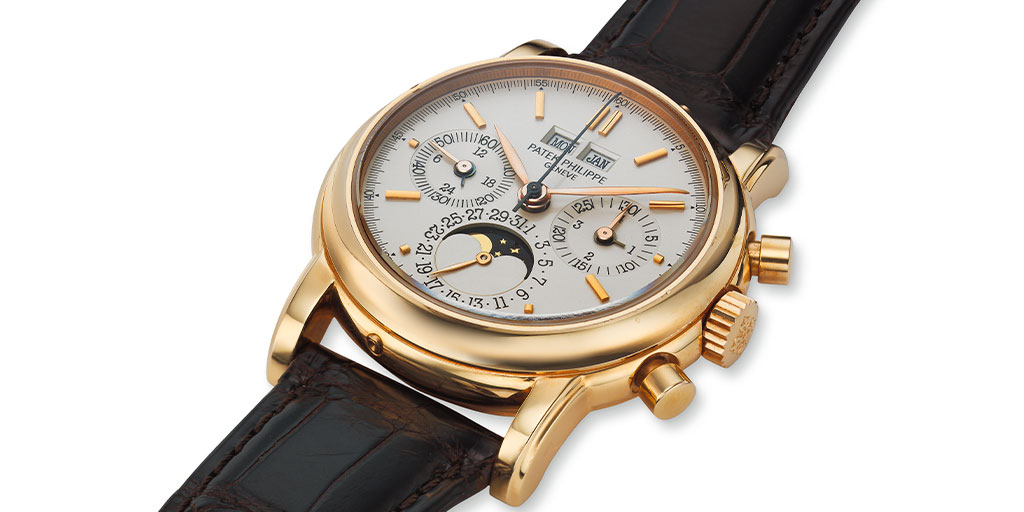
The second series ref. 3970 began in 1987 and was produced until 1990, showing some overlap with the first series. There are approximately 650 second-series ref. 3970 examples, with 150-200 of those being reference ref. 3971.
Case: The biggest change delineating a first series from a second series is the case back. The ref. 3970 introduces a solid screw-down case back, thus becoming the ref. 3970E for étanche (French for waterproof), with an additional sapphire screw-down case back available on request.
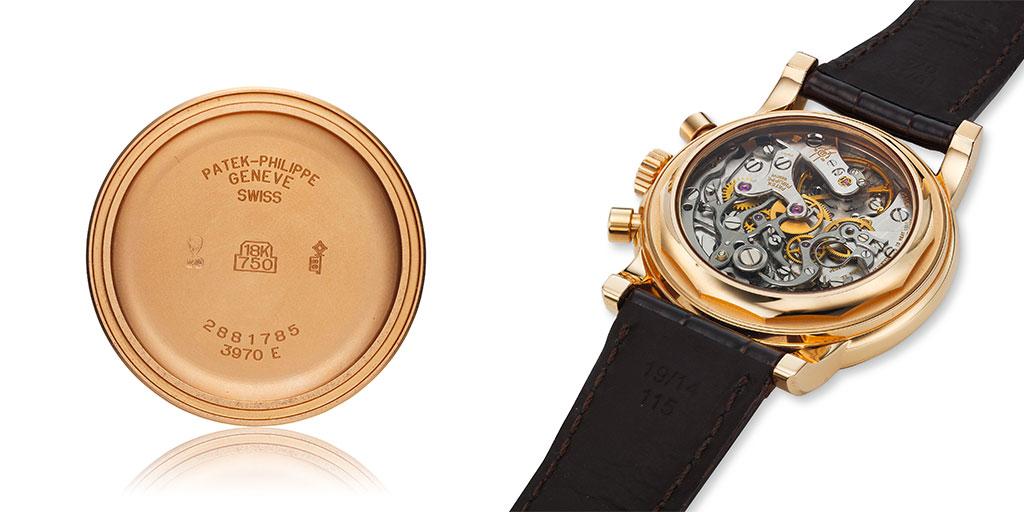
Patek Philippe also began offering the full range of case metals: 18K yellow, rose, and white gold, and platinum. Yellow gold is by far the most common, followed by rose, platinum, and white gold—this is true across each series. For example, it’s generally believed that among the second series, there are just 14 known in white gold and 11 in platinum.
Collector’s tip: When evaluating a ref. 3970, make sure the case back screws in properly. Sometimes it can become stripped or threaded incorrectly and won’t close completely, which can be terribly expensive to fix. Also, while “E” stood for water resistant 30 years ago, don’t count on it today.
Hallmarks: Across the second series, we start to see variations in how hallmarks were punched. At the beginning of the series, there are small hallmarks on the case back (and inside case back). Then, there is about a two-year period when hallmarks appear on the outside of the lugs. These outside hallmarks are not on every second series. In the middle of second-series production, they begin as “big hallmarks,” with the “750” and casemaker number stamped proudly outside the lug. This changes to smaller outside hallmarks towards the end of the second series, a style carried over to the third series. It changes the look of the watch—some collectors like this and are willing to pay a premium for a “big hallmark.” It’s my opinion that you shouldn’t prioritize minor sub-references like this and instead get the best condition ref. 3970 you can within your budget, unless the aesthetic really speaks to you.
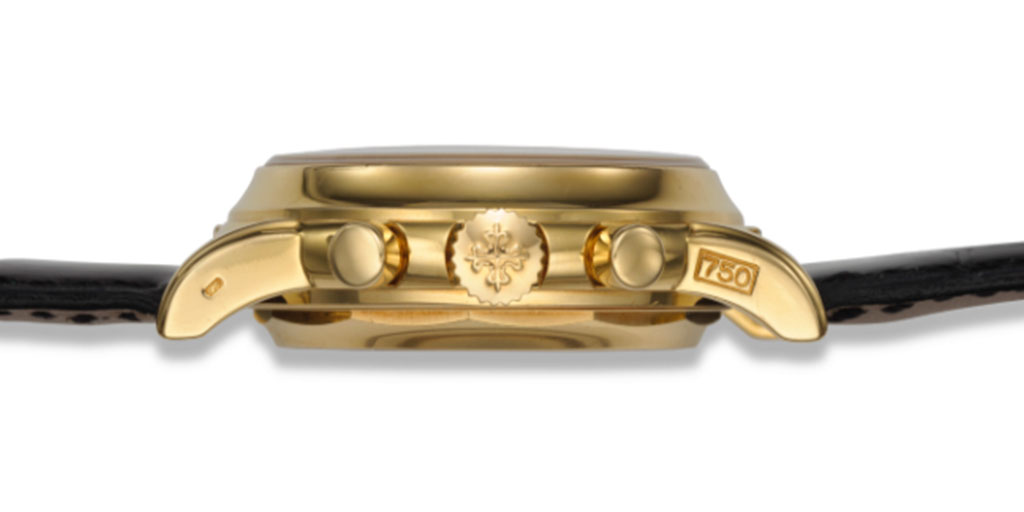
Dial: Most second-series ref. 3970 examples have an “opaline silver” dial, as described on their papers. However, early second series have been seen with the same two-tone dial in the first series. Again, changes in the ref. 3970 are evolutionary and there are few firm rules. Like the first series, the second series uses feuille hands and has squared baton hour markers.
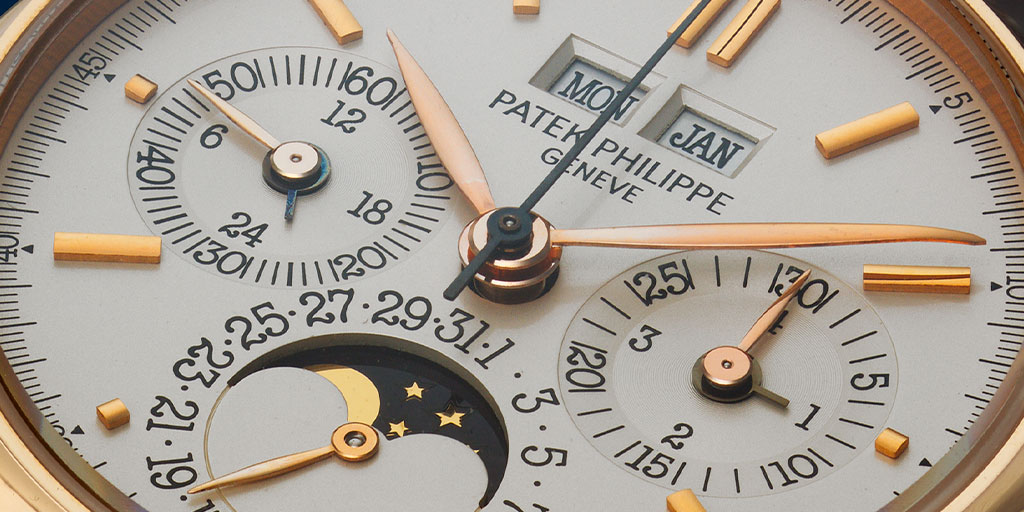
Calendar disks: Most second series have calendar disks with a “typewriter” font that matches the style of the dial font, though early second series have been seen with the disks typical of the first series. Generally, the typewriter font seems to get bolder as we move later into the second series.
Third Series (1989-1995)
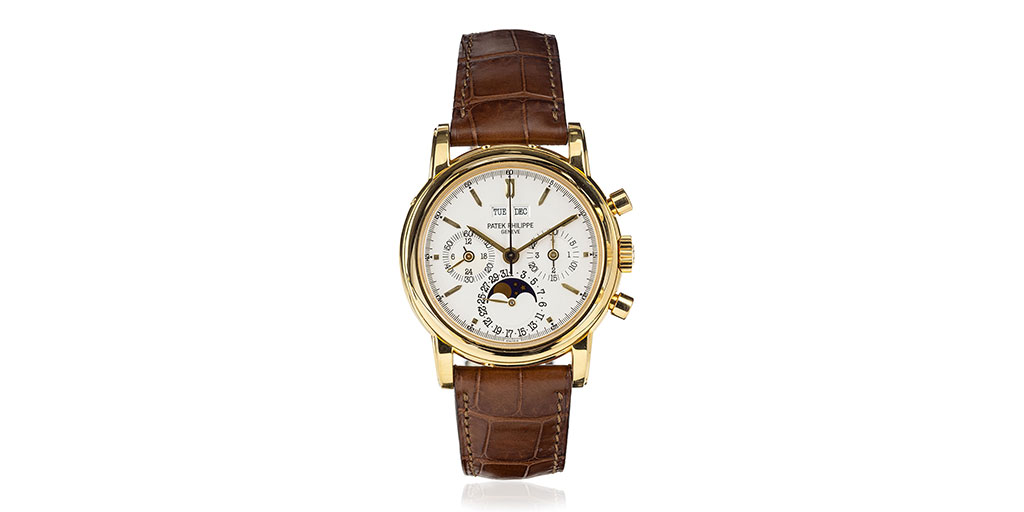
In 1989, Patek Philippe marked its 150th anniversary, sparking significant change. The success of the thematic “Art of Patek Philippe” auction and the Caliber 89—the world’s most complicated watch—boosted the brand’s global recognition.
The ref. 3970 also saw bigger changes with the transition to the third series in 1989 which remained in production until 1995. Production increased dramatically, with an estimated 1,350 pieces made—almost doubling annual production of the ref. 3970. Complicated, traditional watchmaking was at the core of Patek Philippe’s renaissance, and the ref. 3970 was the very pinnacle, playing a central role in its pursuit of growing production (and profit).
Case back: By the third series, every ref. 3970 was sold with a solid screw-down case back and an additional sapphire case back.
Dial: The biggest changes in the third series appear on the dial. The leaf hands are replaced with baton hands; hour markers are pointed and faceted to match the hands. The dial is brighter. Early examples might have a thinner font on the dial as seen in the second series (particularly noticeable on the date track), but this becomes thicker throughout the third series.
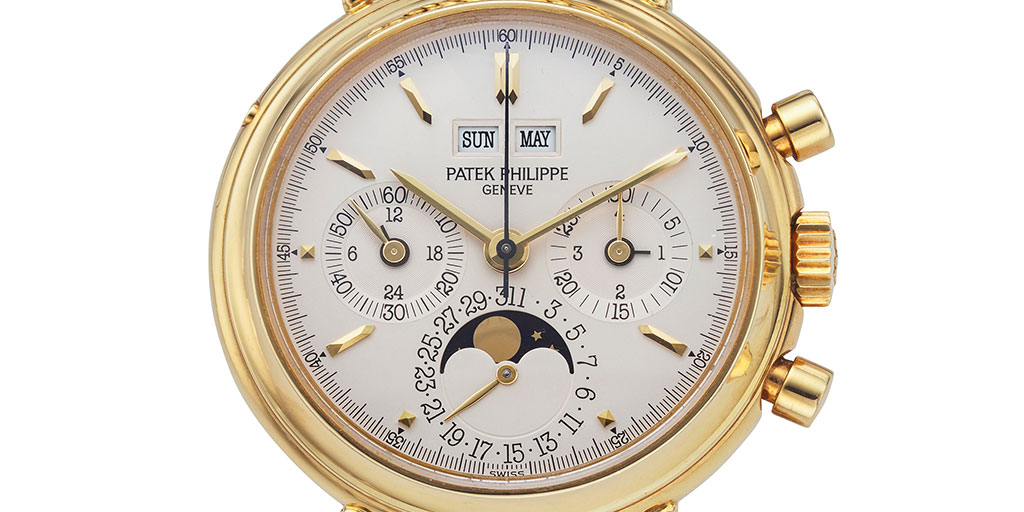
Calendar disks: The calendar disks on most third series have a sans-serif font that looks more modern than the previous font, though the typewriter font can still be seen on early “transitional” third series examples. Through the later series, this sans-serif font becomes slightly larger.
Collector’s tip: While the first and second series have risen significantly in price, the third series remains a “value buy” in ref. 3970 land, as much as any six-figure watch can be. A mint condition, complete-set third series is still something special and collectible, and should prove a smart purchase with time.
Fourth Series (1994-2004)
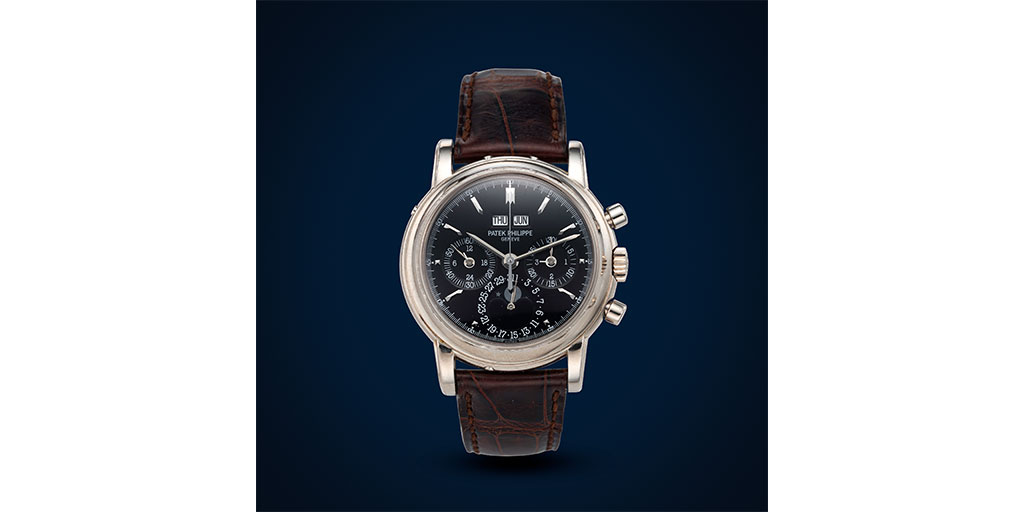
Finally, the fourth series, in production from 1994 to 2004 with an estimated 2,000 pieces made. It’s identical to the third series, but swapped a traditional pin buckle for a deployant clasp. The fourth series is best distinguished by the case and movement number batches (see above).
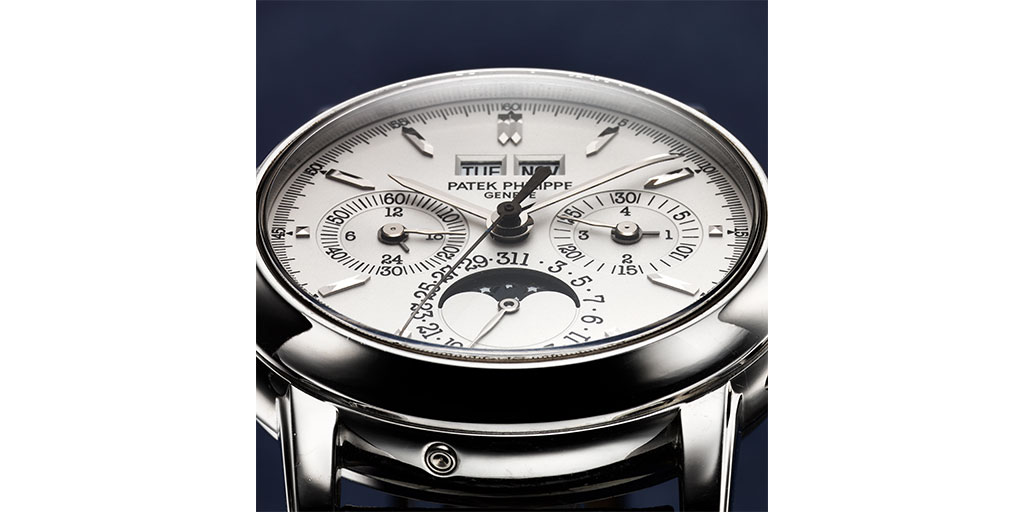
While production ended in 2004, the ref. 3970 would have sat in retailers for a little while longer. By the time the successor ref. 5970 came along, the ref. 3970 was considered small for contemporary tastes. It wouldn’t have been uncommon to see a standard ref. 3970 sell at or below its retail price at auction. Auction results in 2004 could fall between $60-70,000 (below retail), with almost no distinction between a first series (e.g. $76,200 in 2004) or a fourth series ($64,400). Of course, someone in 2004 would also think you’re crazy for dividing a modern watch into different “series.”
The Growing Ref. 3970 Market
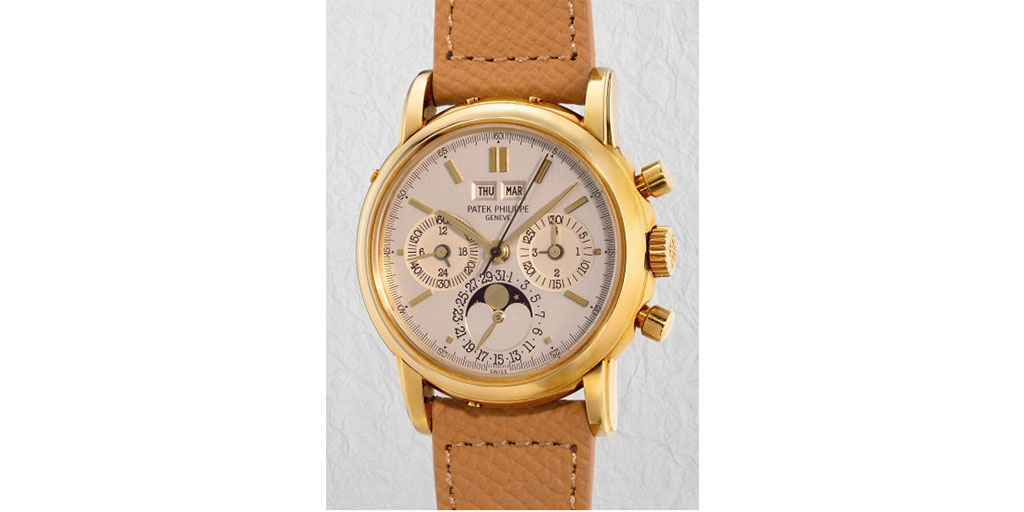
I’ll be honest: Buying a ref. 1518 or ref. 2499 in 2025 scares the sh*t out of me (except from Collectability, of course!). Most are known to the market and have changed hands more than the Dodgers change pitchers.
But that’s not yet the case with the ref. 3970. Only a few years ago, a ref. 3970 was a ref. 3970, without much differentiation between series.
“There are still true, original pieces out there that have everything,” Reardon said. This prospect of finding something new and fresh-to-market is the most exciting part of collecting. It’s great to acquire any rare and special watch, but perhaps less so if that particular example has been trading hands since the Reagan administration.
As a younger watch with higher production than its predecessors straddling the vintage and modern era, there are plenty of fresh ref. 3970 examples to be discovered.
For example, Less than a quarter of the 100 first series ref. 3970s and ref. 3971s have even appeared on the market.
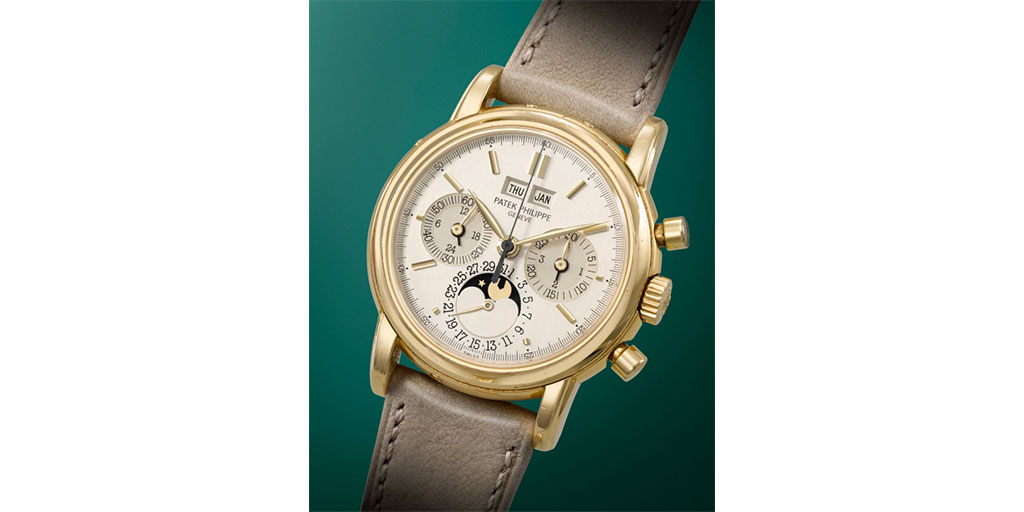
If a collector wants an exceptional, full-set ref. 3970, it’s gettable. Or, if a super-collector wants to build a collection of ref. 3970s in every metal, that can be built over a few years. You could wait a lifetime to do the same with the ref. 2499 or ref. 1518 and still fall short.
Prices, for now, are still in the mid-$100s for standard yellow gold ref. 3970 examples.
But, the market is changing. In 2018, Hodinkee asked about the ref. 3970: “Why does no one seem to care about it?” This was when you could comfortably snag a stock gold ref. 3970 for under $100k.
As the ref. 3970 approaches 40, the market is still in its early years of development, with collectors and dealers learning how to value the reference across years and series. Search your favorite secondary marketplace and you’ll see anywhere from 20-40 available at any given time, though many of those will have issues that count as dings against their long-term collectability.
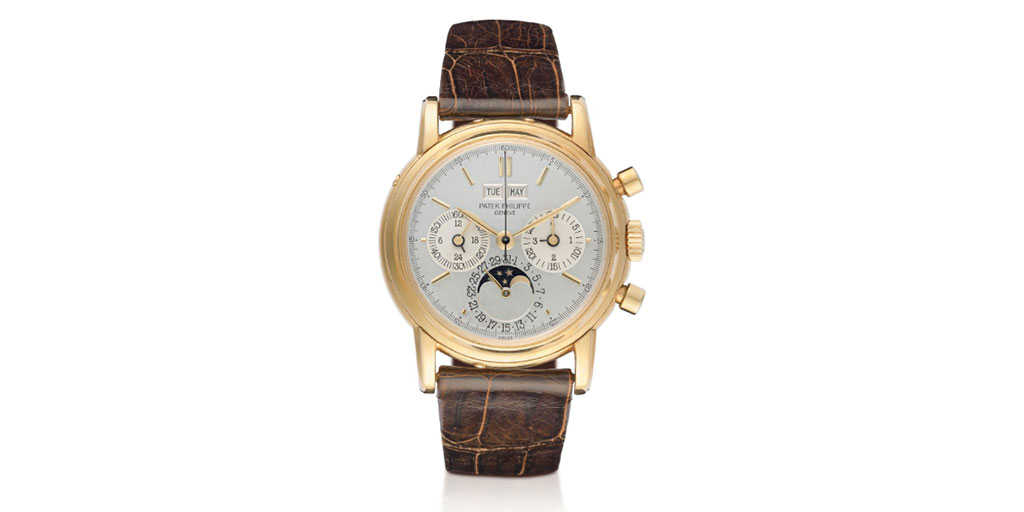
“Even with the increased demand, it’s still a buyer’s market,” John said. There are enough examples around that you can be patient and wait for one that meets your criteria.
Prices have risen, slowly and then quickly, especially on early series examples. The growth in interest for the first series over the past year took many by surprise. In 2024, a few first-series results reframed the market:
- Sotheby’s NY, December 2024, #875,001 (Tom Brady Collection): $312,000
- Phillips Hong Kong, November 2024, #875,004: $416,000
- Christie’s Geneva, November 2024, #875,015: $305,000
- Artcurial Basel, March 2024, #875,006: $281,000
Conversions from local currency to USD are approximate.
A few later-series ref. 3970J examples sold for $120-170,000 in the November 2024 auctions besides those first series results, illustrating a 2-3x premium for a first series. As of this writing, a first series ref. 3970 is being offered by a private dealer for €350,000, and others have traded hands privately within the band of these auction results.
It’s not just the price increases, but also the premium these early examples now command. It makes sense: There are only 200 first series watches (compared to 2,000 fourth series), and they have a few characteristics that really do make them feel vintage compared to a later ref. 3970. As we learn how rare it is to find an early ref. 3970 in excellent condition complete with two-tone dial and all the fixings, I wouldn’t be surprised to see these premiums continue to grow.
With the rapid growth in first series prices, collectors are naturally looking to the nearly-as-rare second series to satiate their ref. 3970 appetites. Prices for second series watches have yet to reflect a substantial premium over the more common third and fourth series, despite their relative rarity, but this is changing.
“Last year, I had collectors coming to me saying they only want a first series,” Reardon said. “At some point that changed, and people started saying they’d take a second series too.”
You can imagine this will start to push second series prices up, and it’s only a matter of time before collectors pick up the phone again and say, Sure, I’ll take a third series.
Collector’s tip: “I’d rather have a mint third series with box and papers than an over-polished earlier series,” Reardon said.
Special Ref. 3970s
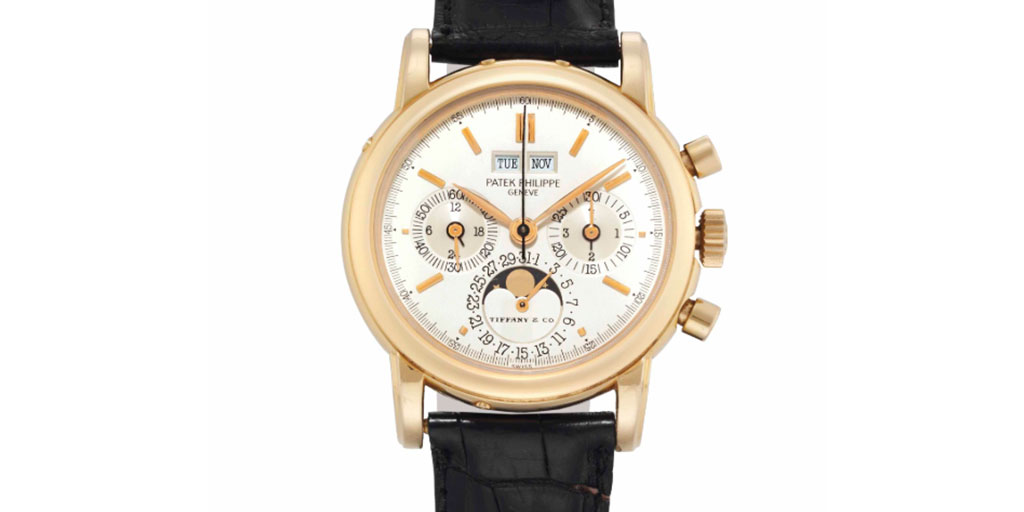
The ref. 3970 was typically delivered with a silver opaline dial, but you’ll see some variation in standard production. For example, platinum examples are sometimes seen with a black dial, often fitted with diamond indices (but a black dial without diamond indices is special!).
Even rarer, very few doré (or champagne) dials have been found in yellow gold cases. In a handful of instances, these are original and described on the papers as opaline doré. For example, a second series doré sold for CHF 437,500 back in 2021 (my grail, though sadly I fear this would be approaching a million bucks in 2025). In other instances, these are additional dials later requested by clients (link here) and command less of a premium.
There are also at least a few known ref. 3970 examples with a retailer signature, most notably from long-time Patek retailer Tiffany & Co.
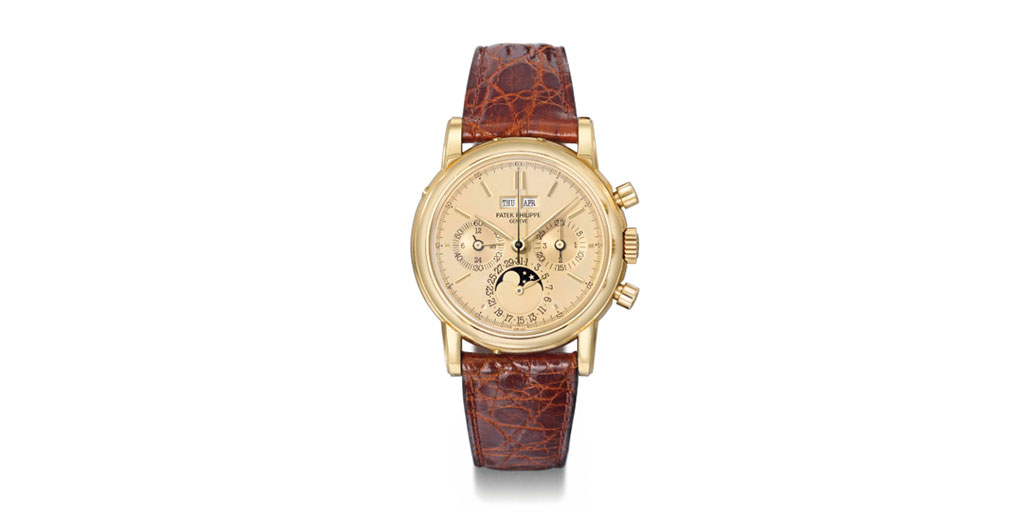
Beyond these rare watches that were technically part of standard production, Patek Philippe produced a number of other special ref. 3970s.
On a Bracelet
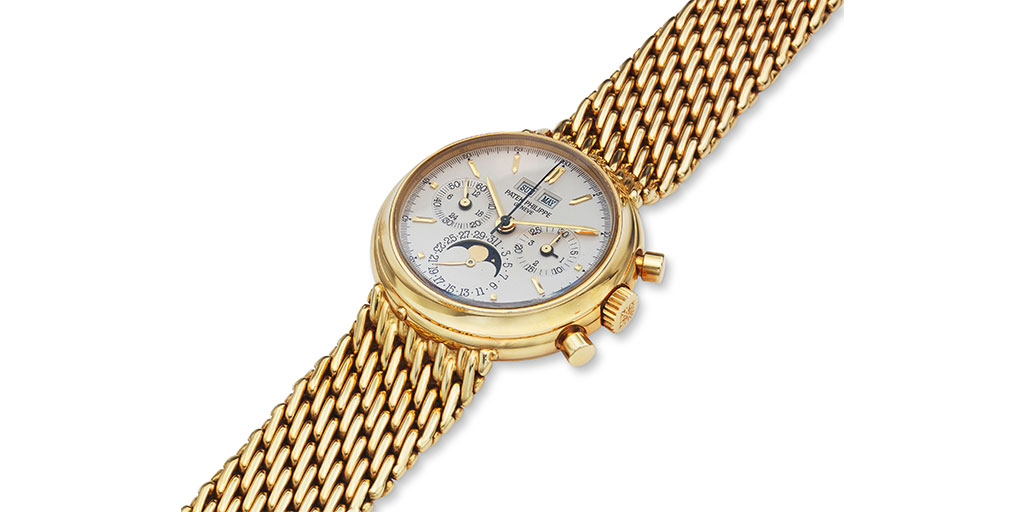
While the ref. 3970 was typically delivered on a leather strap, it can also be found with an integrated bracelet and no lugs, which had its own reference ref. 3970/2. While the woven bracelet style is most common, clients could also request more creative and outlandish styles. Patek Philippe also delivered some models with a removable bracelet.
The earliest ref. 3970/2 examples we’ve seen come in the early second series (case 875xxx, movement 285xxx)—one is even Tiffany-signed!
A ref. 3970 on bracelet is significantly rarer than the standard ref. 3970 on a strap. Recent auctions have even said as few as 10 are known in yellow gold, with the other metals being even rarer.
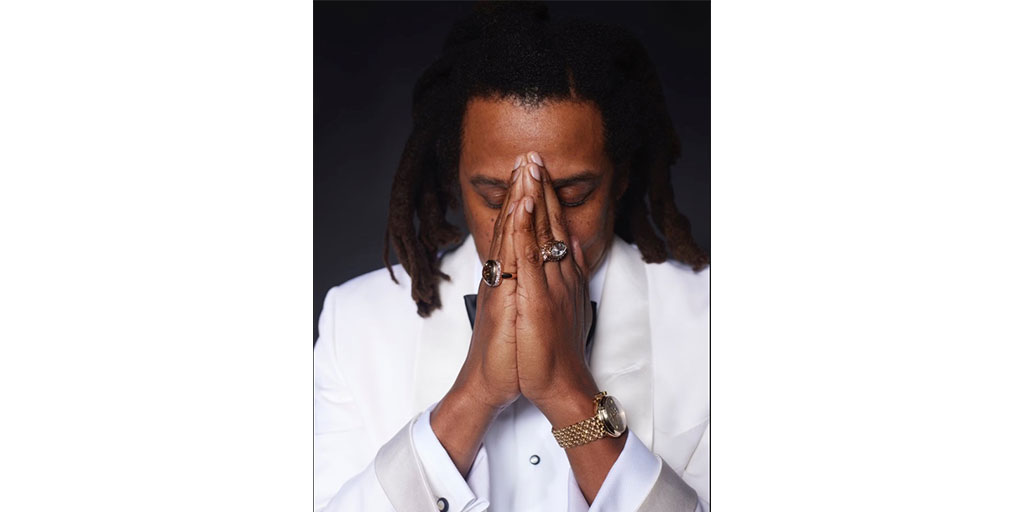
Despite the rarity, these have historically traded well under a standard ref. 3970, though they’ve begun to catch up. Because of their rarity, Reardon thinks they’re undervalued—call it the Jay-Z effect, thanks to the rap mogul prominently wearing a ref. 2499 on an integrated bracelet.
This is where I’ll admit Reardon has reached a higher level of enlightenment than me, because I’m not sure, even in my most self-assured moments, I could wear a ref. 3970 on a woven integrated bracelet.
That said, it’s true that collectors of all kinds have become more comfortable wearing bracelets, and a ref. 3970 on a bold, gold bracelet feels trendy in a way it didn’t just a few years ago.
After all, it’s not that long ago you can find a run of 3970/002 examples in every metal failing to sell at auction. It doesn’t seem like that’d happen in 2025.
Saatchi, Special Commissions, and Clapton

Patek Philippe produced a variety of limited, special, or even unique ref. 3970s during and after its original production. These were commissions for important and sometimes even famous clients, or limited editions to celebrate the brand.
While first-series prices are gaining, these special one-offs are still the most expensive ref. 3970s when they come to market.
Some of the most notable and collectible ref. 3970s were made for mega-client Eric Clapton. These typically brought Breguet numerals, chronograph scales, and different dial colors to the ref. 3970. In addition to the rarity and provenance, they just look gorgeous, making them some of the most desirable ref. 3970s around.
Sometime after Clapton, Hollywood agent and former Disney CEO Michael Ovitz commissioned a number of special ref. 3970s, often drawing on the same design cues as Clapton’s commissions. These are easily identified by Ovitz’s logo at 6 o’clock on the dial.
After production ended in 2004, Patek continued making special-order ref. 3970s for its most important clients. Again, the typical formula was to add a Breguet numeral at 12 o’clock, a tachymeter scale, and a case-dial combination to make even the most jaded among us drool: black dial in rose gold or platinum, salmon in white gold, and so on.
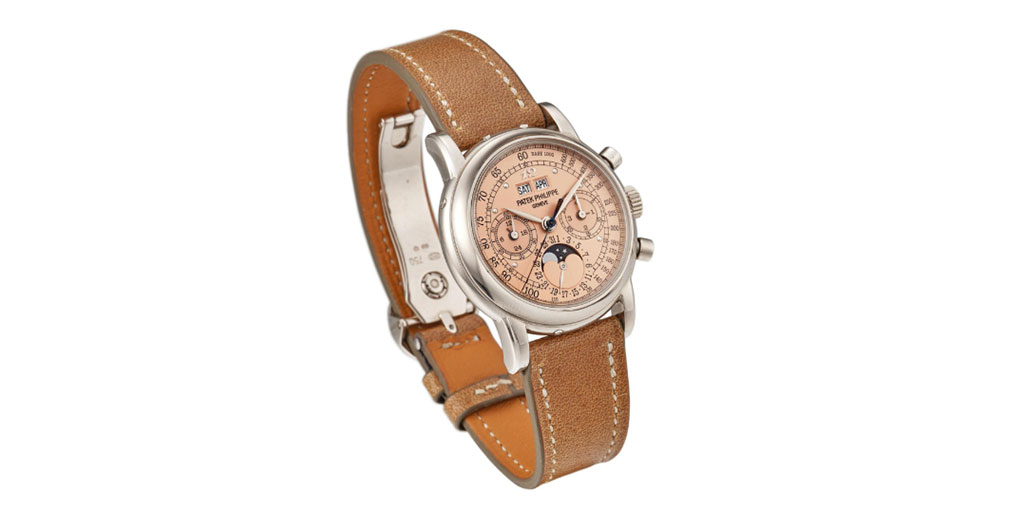
The Record-Setting Ref. 3970: The highest-ever public sale for a ref. 3970 is a special order with a salmon dial and white gold case previously owned by Eric Clapton—it sold for $785,000 in 2021. We’ve seen similar special-order yellow and rose gold examples pass $600,000.
Saatchi Edition: In 2015, Patek Philippe hosted the Watch Art Grand Exhibition in London’s Saatchi Gallery to celebrate its 175th anniversary. Among other celebrations, Patek Philippe brought back the ref. 3970 in extremely limited numbers. It’s believed just five pieces were made in platinum and rose gold, each featuring a black dial with a Breguet “12,” applied markers, and tachymeter, again drawing from previous client commissions that had become popular among collectors. It was a way for the brand to bring back a collector favorite while celebrating its 175th anniversary.
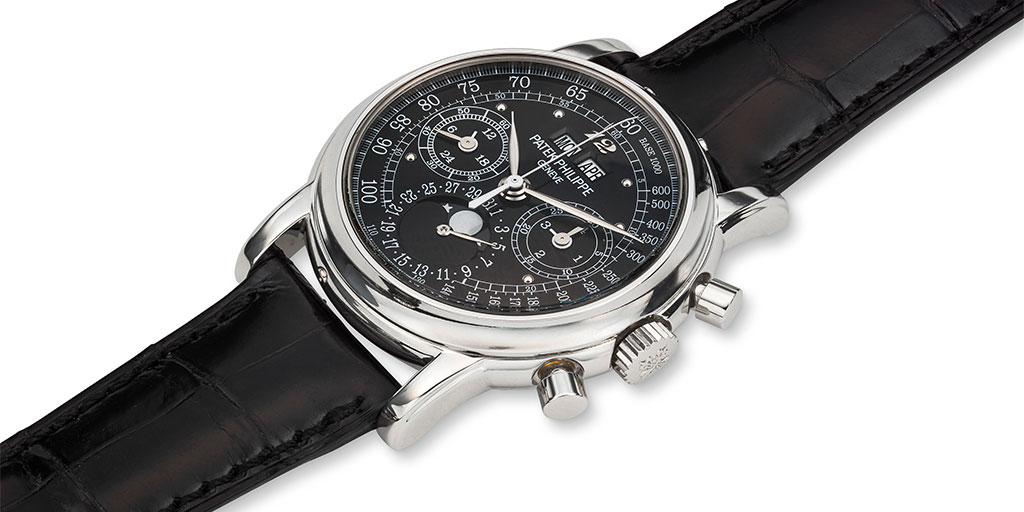
These London Edition ref. 3970s have also begun to approach the prices of Clapton ref. 3970s: In 2023, Phillips sold a platinum Saatchi for $636,000.
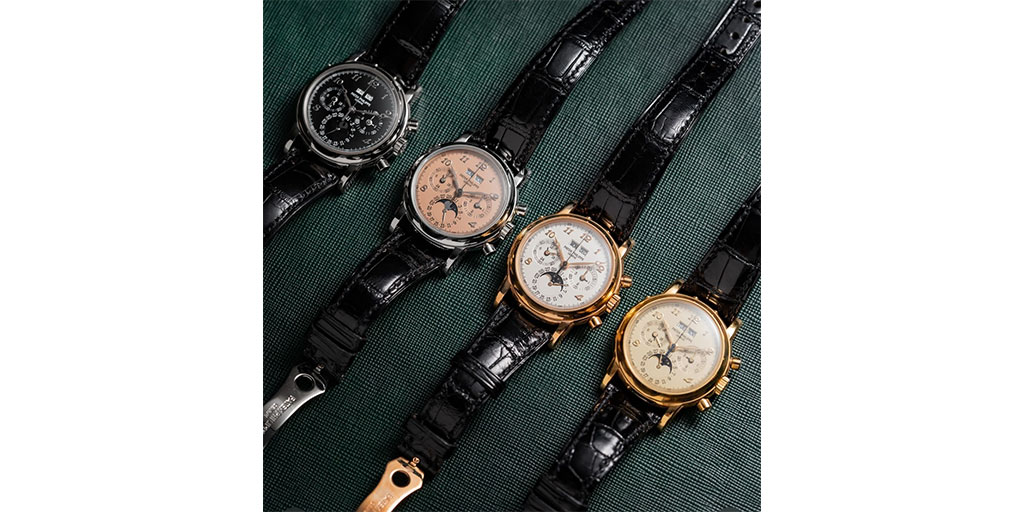
A Personal P.S.: A personal favorite set of four ref. 3970s—one in each metal—features complete Breguet numerals and hands, produced in 2007 and first appeared at auction in 2013. It’s thought that a few of these sets were made for top clients at the end of the ref. 3970’s production in 2005.
There are certainly many special and even surprising commissions sitting in private collections, just waiting to be discovered by the next generation of enthusiasts.
The Full Set
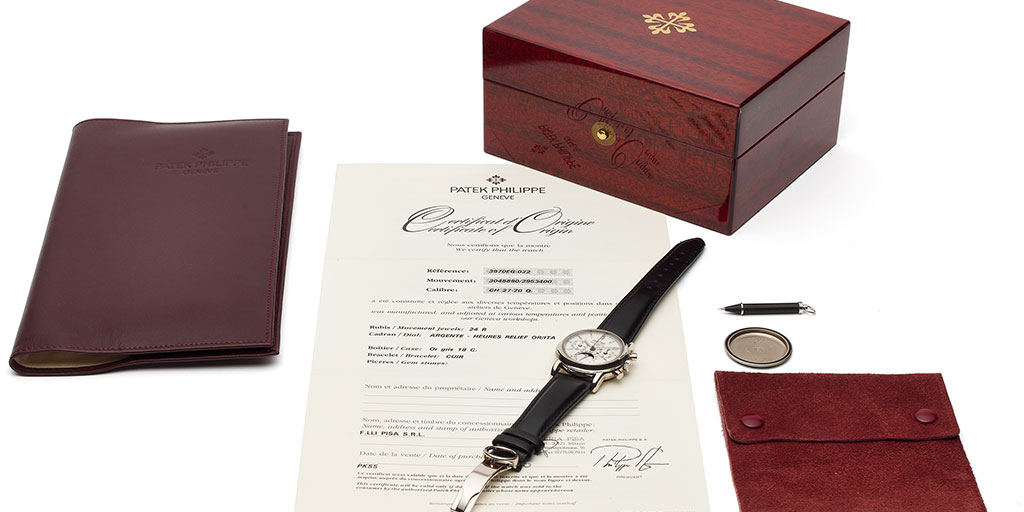
As always, the watch is the main event. But here are a few things to look at when evaluating the rest of a ref. 3970 set: box, papers, and other accessories.
Collector’s tip: Check the spring bars! They’re almost always replaced, but it’s a nice bonus to have original, matching spring bars.
Papers
As with any Patek Philippe, you might see two types of papers with a ref. 3970: a Certificate of Origin or an Extract from the Archives.
A Certificate of Origin is the original document issued at the time of sale listing reference, case, and dial details, along with the date and location of sale. An Extract from the Archives is a retrospective document and can be requested from Patek Philippe. It confirms these details based on the manufacturer’s historical records.
Collector’s tip: While it’s good to have an original Certificate of Origin, an Extract from the Archives provides a second confirmation of a ref. 3970’s important details. So many Certificates have been messed with over the years, an Extract is helpful to verify what you have, especially if the Certificate comes from somewhere with a more unsavory reputation.
Papers are also helpful for understanding the exact reference: For example, a ref. 3970E will always have “E” on the papers. Or, papers can help you identify a ref. 3971 that’s been improperly described as a ref. 3970.
Box
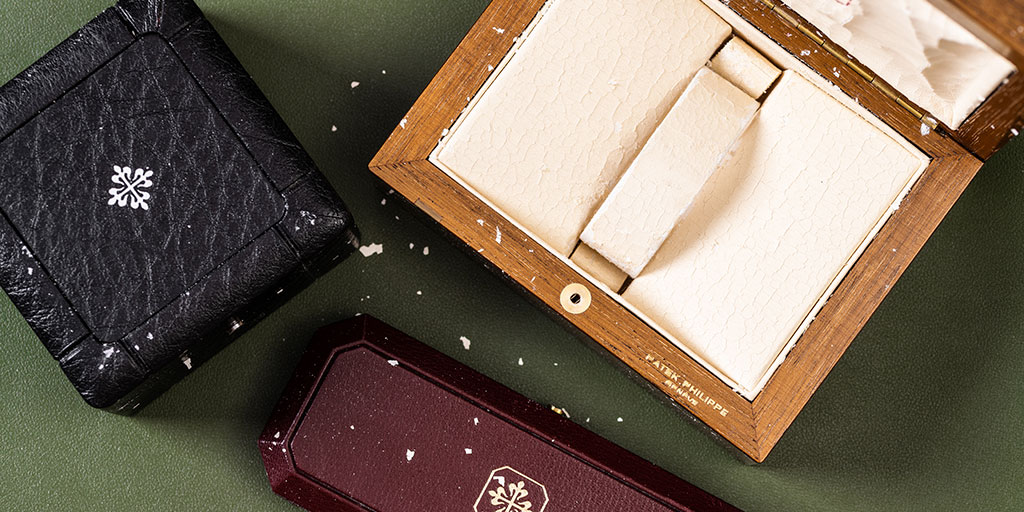
Before about 1990, the ref. 3970 came with a brass-striped box where the inside leather has become “flakey.” Like an early ref. 3970, these early boxes are hard to find. Beginning in 1990 and after, you’ll see the familiar Patek Philippe wooden presentation box.
Many, perhaps most, of the boxes offered with ref. 3970s nowadays are not original to the watch. This is fine, but it’s good to know what you’re getting to ensure it is priced accordingly.
Buckle
For most of the ref. 3970’s production run, it was offered on a traditional pin buckle matching the metal of the case. Again, it’s not a deal-breaker if an otherwise good ref. 3970 is missing its pin buckle, but it can impact price. With the fourth series, Patek Philippe changed to its modern folding deployant clasp.
Closing Thoughts on Collecting the Ref. 3970
No doubt there are many special and custom ref. 3970 examples that are beautiful, a fitting cap to the long-running perpetual calendar chronograph that crossed the bridge from vintage to modern.
But for me, there’s an inherent appeal in those rare ref. 3970s that were part of standard production. The fact that any well-to-do person might’ve walked into a Patek Philippe retailer in the 1990s and discovered a platinum second series, a doré dial, or even one properly fitted with an Arabic numeral ref. 5004 dial connotes a certain charm. Of course, this is also part of the appeal of the first series ref. 3970 and why prices have increased exponentially.
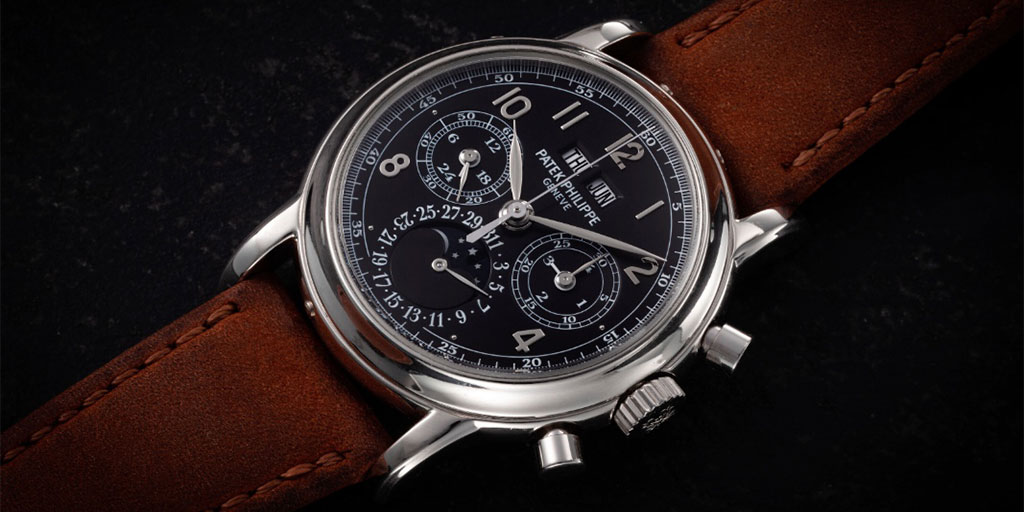
Mr. Reardon echoed this sentiment. It’s believed that master case maker Jean-Pierre Hagmann made some cases for early ref. 3970 examples. Hagmann made cases for Patek Philippe and other brands before joining Rehxepi Rexhepi’s Akrivia workshop in 2019.
“It’s my dream to find a Hagmann ref. 3970,” Reardon said. So, if you’ve got an early ref. 3970 laying around, grab a loupe and check the hallmarks for the casemaker’s signature “JHP” stamp—if you happen to see it, give John a call.
“The best part about it is no one else would even know,” Reardon added.
While prices have risen across the board, a standard ref. 3970 is still a good bit cheaper than a ref. 5970. And it probably always will be: The ref. 5970 is larger, had lower production, and marked the end of Patek Philippe’s Lemania era. For some, the ref. 3970 will always be too small, or caught oddly between the vintage and modern era.
And that’s just fine.
Perhaps more than anything, it’s exciting to know that there are fresh ref. 3970s just waiting to be discovered as the next generation of collectors and enthusiasts grows up. It’s a watch that was in production during my lifetime, the last classically-sized perpetual calendar chronograph from Patek Philippe, and the last there might ever be.
Tony Traina is the editor and founder of Unpolished, a newsletter for watch collectors. He’s a former editor at Hodinkee and also contributes to GQ, Sotheby’s, and Revolution. He’s also a collector who started in watches while a practicing attorney.

